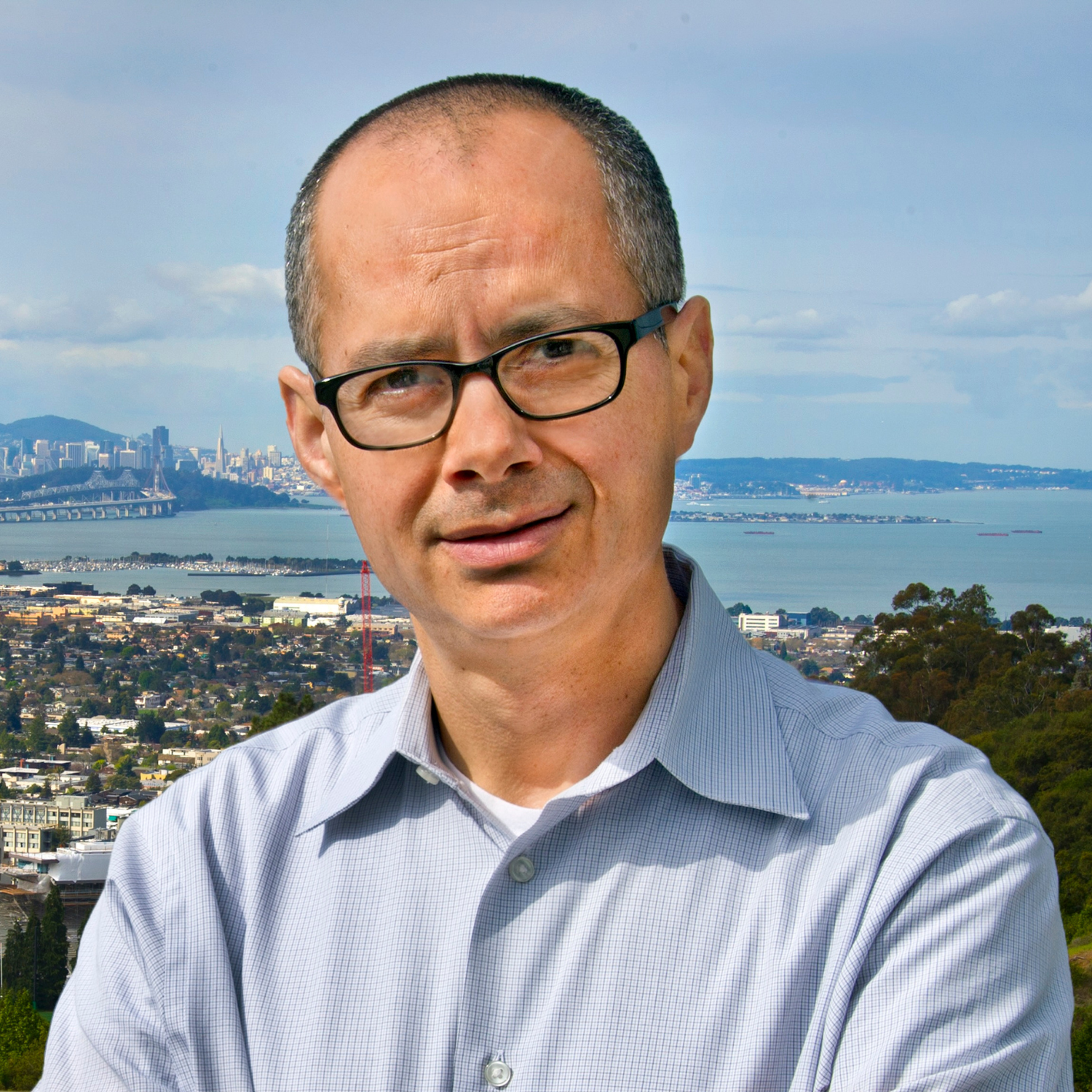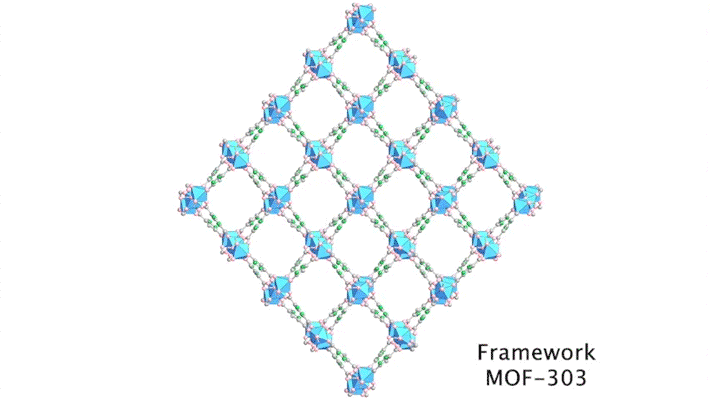by Cindy Lee

When Advanced Light Source (ALS) user Omar Yaghi received the most prestigious award of his career, he was quick to praise the system that had allowed him to flourish.
“This recognition is really a testament of the power of the public school system in the US.”
During the press conference celebrating Yaghi, who is the James and Neeltje Tretter Chair in the UC Berkeley College of Chemistry, he directly linked his Nobel Prize to the public education he had received.
“All my degrees have come from public schools,” he explained, “and I have always enjoyed attending as a student and working as a professor in these universities, and especially UC Berkeley, where the faculty are given full freedom to explore, fail, and succeed, and still we are being supported by our colleagues and our administrators.”
The exploration bore fruit, the failures have faded, and the success is sweet. Alongside Susumu Kitagawa and Richard Robson, Yaghi was selected for the 2025 Nobel Prize in Chemistry for the development of metal–organic frameworks (MOFs). MOFs comprise metal ions and organic molecules that are organized to form crystals containing large cavities. Their structure creates a large surface-area-to-volume ratio, allowing MOFs to absorb huge amounts of gases and liquids in a relatively tiny volume.
In the press release announcing this year’s prize, the Royal Swedish Academy of Sciences credited Robson with recognizing the potential of a novel molecular architecture, Kitagawa with predicting that it could be made into flexible materials, and Yaghi with imbuing the materials with new and desirable properties. These desirable properties include harvesting useful substances, sopping up harmful gases, and enabling technologies ranging from drug delivery to next-generation batteries.

“Following the laureates’ groundbreaking discoveries, chemists have built tens of thousands of different MOFs. Some of these may contribute to solving some of humankind’s greatest challenges,” proclaims the Nobel announcement.
To build these MOFs, characterize their properties, and develop them into real-world solutions, Yaghi and numerous other chemists have turned to another public resource: scientific user facilities like the ALS.
Synchrotron science for MOF research
Open to researchers around the globe, the ALS offers users both breadth of techniques and depth of expertise. It has been the perfect playground to explore MOFs. Since 2010, the Yaghi research group has used ALS Beamlines 7.3.3 (SAXS/WAXS), 12.2.1 and 11.3.1 (small-molecule crystallography), 12.3.2 (microdiffraction), 10.3.2 (hard x-ray microprobe), 12.2.2 (high-pressure diffraction), and 6.3.1 (soft x-ray absorption spectroscopy).
The full complement of techniques has uncovered many insights into MOFs. Yaghi is co-author of 60 refereed journal articles using the ALS and two patents citing ALS work. Fifteen of his ALS publications included ALS staff co-authors, and two of his ALS publications were listed in the scientific background for the Nobel Award. The two ALS publications cited in the award both involved small-molecule crystallography of MOFs.
Staff Scientist Simon Teat, who was recruited to develop small-molecule crystallography at the ALS, described why this technique is so useful for characterizing MOFs.
“The trouble with MOFs is, because they’re mainly holes, they don’t organize themselves very well, which means they don’t grow big crystals,” he said.
MOFs only form small, weakly scattering crystals, which require high-intensity light to produce useful diffraction patterns.
“The ALS has a brighter source than almost everybody else,” said Teat, “so we get high enough resolution to be able to solve and refine MOFs.”

Both solving and refining MOFs are crucial components of the Nobel citation, and this is exemplified by the case of MOF-303. The award announcement highlighted this MOF for capturing water vapor from desert air. The Yaghi group returned to the ALS for follow-up work on MOF-303, publishing results that were chosen for an ALS Science Highlight in 2022. After small-molecule crystallography revealed the sites that held most tightly to water molecules, the researchers could fine-tune the efficiency of the material by swapping out organic linkers at those sites. The MOF-303 studies illustrate how chemistry leads to real-world impact.
“Harvesting this water could help turn dry deserts into oases,” Yaghi said.
Molecular architecture with an outsized impact
The study of MOFs has led to the development of covalent organic frameworks (COFs). These structures are both lighter and more stable than MOFs, offering the potential for even more materials. Characterizing COFs, however, is tricky.
“They’re more horribly scattering than MOFs because of the lack of metal,” said Teat. “That’s a lot of the work that Chenhui’s doing,” he added, referring to his colleague Chenhui Zhu’s collaboration with Yaghi.
Staff scientist at Beamline 7.3.3, Zhu’s expertise in small- and wide-angle x-ray scattering (SAXS/WAXS) dovetailed with the development of MOFs and COFs, and he is a co-author of 12 publications with the Yaghi group.
“SAXS/WAXS covers a broad range of length scales—from angstroms to approximately 150 nanometers,” Zhu said. “This means it provides essential information on crystalline order, unit-cell dimensions, and framework symmetry, as well as pore size distribution and the locations of adsorbed gas molecules.”
Zhu has collaborated with the Yaghi group on studies harnessing grazing-incidence x-ray scattering (GIXS) to investigate MOF and COF thin films that are more than a thousand times thinner than a human hair. Their collaboration has also used powder x-ray diffraction to confirm the synthesis of COFs with outstanding thermostability and even examine woven COFs.
“We’ve been able to demonstrate applications in catalysis and gas separation,” Zhu said, mentioning just two of the manifold possibilities of MOFs and COFs.
Dreaming up new possibilities
For both the materials themselves and the researchers studying them, the ALS has proven to be fertile ground to collaborate and grow.
“The ALS is embedded in an exciting local research environment with stellar academic universities and the world’s most innovative industries,” noted ALS Interim Director Andreas Scholl. As a user facility, it is a setting for people of different backgrounds and experiences to answer scientific questions and create applications that are greater than the sum of their parts.
For Zhu, collaborating with the Yaghi group extends beyond individual x-ray experiments for a renowned scientist. “I’ve had many good conversations with many good students,” he said, shining a spotlight on the importance of mentorship and opportunities for early career researchers.
Because the ALS, the Yaghi group, and other users have invested so many resources in developing capabilities to study MOFs and COFs, the field is ripe with possibility. These capabilities have allowed more researchers to join the field and contribute discoveries of their own. As the capabilities continue to grow, the advancements in MOFs and COFs will certainly follow.
Benefits to MOF research were a component of the science case for upgrading the ALS to a fourth-generation light source. A group that convened in 2017 to outline the uses for coherent light reported that an upgraded ALS would provide “extraordinary spatiotemporal range of kinetic processes with high chemical contrast.” They cited MOFs and their applications in gas capture and storage as having broader scientific impact.
Although the upgrade project is not yet complete, the ALS team is already taking significant steps toward enhanced MOF and COF characterization. For instance, the installation of a robotic platform at Beamline 7.3.3 is paving the way for high-throughput thin-film studies and advancing intelligent data acquisition through AI/ML-based algorithms. Other beamline improvements will yield insights into MOFs and COFs under operating conditions.
These capabilities and the convergence of expertise are hallmarks of the ALS and of these public institutions that Yaghi champions. Together, the scientific impacts are significant and hold vast potential.
“If you can think it, you can make it,” exclaimed Yaghi. “If you can think up a material that you want, whether you’re a startup, or a professor, or an emerging student trying to learn chemistry, you can actually go to the lab and make it.”